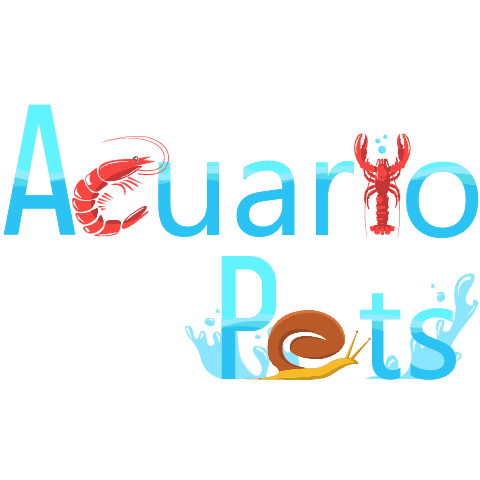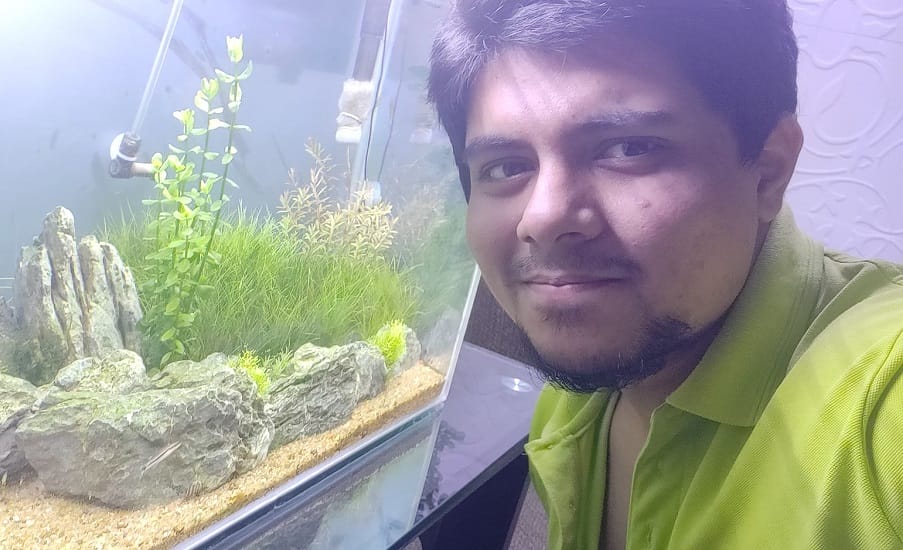This post was created with help from AI tools and carefully reviewed by a human (Muntaseer Rahman) . For more on how we use AI on this site, check out our Editorial Policy.
Check Out These FREE Tools We Made JUST For You!
How To Treat Leopard Gecko’s Cloudy Eye?

It starts with a subtle change—maybe your gecko’s eye looks just a bit duller than usual. Then one day, it’s unmistakable: cloudy, almost ghost-like.
What causes this eerie transformation, and more importantly, can it be reversed? Here’s what you need to know before it gets worse.
What Causes Cloudy Eyes in Leopard Geckos?
Cloudy eyes usually show up when something’s wrong—and your gecko won’t tell you until it’s too obvious to miss.
Stuck Shed Around the Eyes
This is the most common cause. When a leopard gecko sheds, the skin around the eyes sometimes doesn’t come off properly. That leftover skin sticks like cling wrap and blocks the eye. It dries out, becomes tight, and starts messing with their vision.
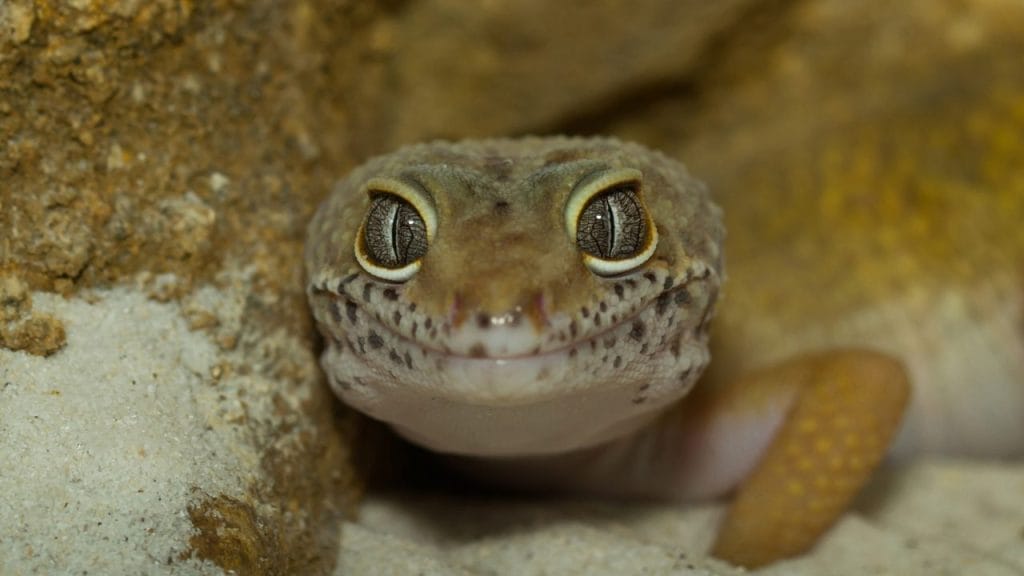
Abscess or Infection
An eye abscess can form from a scratch, bite, or infection—especially if the enclosure isn’t clean. The tissue around the eye swells, and the eye itself might look foggy or sunken. It’s not just uncomfortable—it can get worse fast.
Vitamin A Deficiency
If your gecko isn’t getting enough vitamin A, the eyes can get dry and cloudy. The eyelids may swell, and infections become more likely. This usually happens when the insects they eat aren’t properly gut-loaded.
Injury or Trauma
One sharp edge in the enclosure or a bad jump is enough. Sometimes geckos rub their faces too hard against rough decor. If the eye gets scratched, it can turn cloudy in just a day or two.
So, What Should You Do?
Don’t ignore it. If the eye looks cloudy for more than a day, it’s worth checking. If you’re unsure, a quick vet visit can stop things before they get worse.

Signs Your Leopard Gecko Has a Cloudy Eye
Cloudy eyes don’t just show up out of nowhere. Your gecko usually gives you hints—if you know what to look for.
Constant Eye Closing
If your gecko keeps one or both eyes closed for long periods, that’s not normal. It’s often a sign that something’s irritating the eye—stuck shed, infection, or injury.
Crashing Into Objects
Leopard geckos have great eyesight. If yours starts bumping into things inside the tank, it might not be seeing clearly. Cloudy eyes can mess with depth perception and navigation.
Not Reacting to Movement
Usually, even a small hand movement gets their attention. If your gecko doesn’t react at all, it might not be seeing you properly. That’s a red flag.
White or Foggy Appearance
This is the obvious one. If one or both eyes look dull, milky, or ghost-like, that’s cloudiness. It won’t go away on its own if there’s an underlying issue.
Rubbing Its Face
Some geckos try to scratch the discomfort away by rubbing their face against tank decor. If you see this behavior repeatedly, something’s bothering the eye.
If you notice even one of these signs, don’t wait. Catching it early can mean the difference between a quick fix and permanent damage.
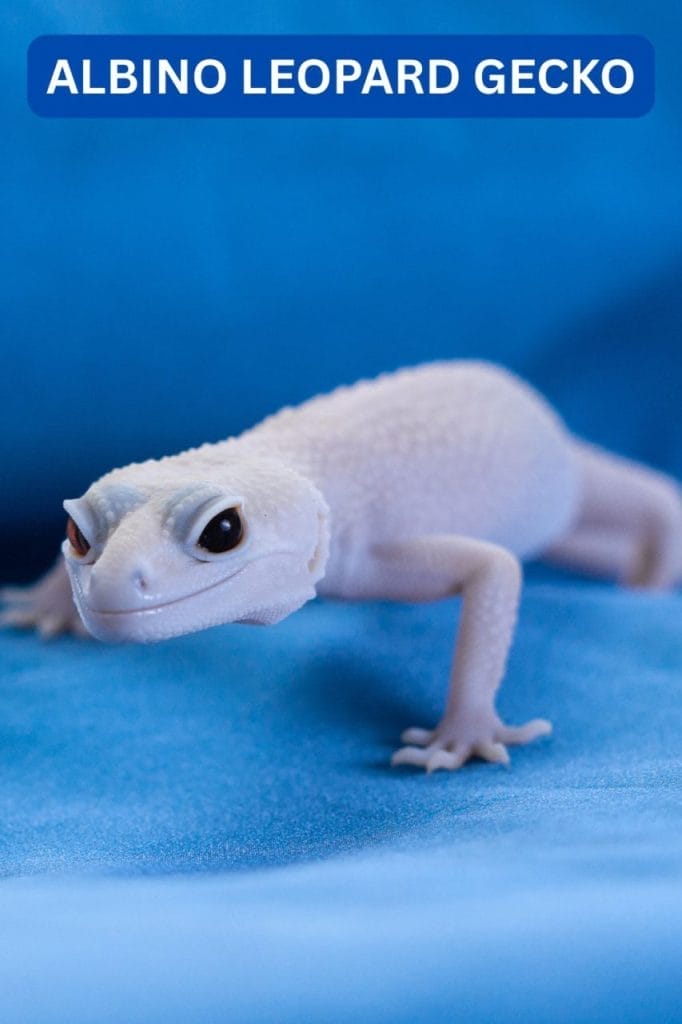
What You Can Do at Home (Before Seeing a Vet)
Not every cloudy eye means a trip to the vet right away. Some issues can be handled at home—if you act early and stay careful.
Try a Saline Rinse
Use sterile, preservative-free saline drops. Gently drop it over the eye to help flush out dust, dirt, or stuck shed. Do not use anything with chemicals or for human red-eye.
Set Up a Humidity Box
If stuck shed is the issue, a warm humidity box can help. Just take a small container, poke air holes, and line it with moist paper towels. Let your gecko sit in there for 15–20 minutes. It softens the shed and can loosen anything around the eyes.
Offer Vitamin-Rich Insects
Gut-load feeder insects with leafy greens, carrots, and sweet potato. This gives your gecko more vitamin A naturally. You can also use reptile multivitamins, but don’t overdo it—too much vitamin A can backfire.
Keep the Tank Clean and Safe
Remove anything sharp or abrasive from the tank. A clean, soft setup reduces stress and prevents further injury. Also double-check the humidity and temperature—they matter more than most owners think.
Don’t Force Anything
Never try to peel stuck shed off the eye with your fingers or tools. That can do serious damage. If it doesn’t come off on its own, it’s vet time.
These steps won’t fix everything, but they can stop things from getting worse while you wait for professional help.
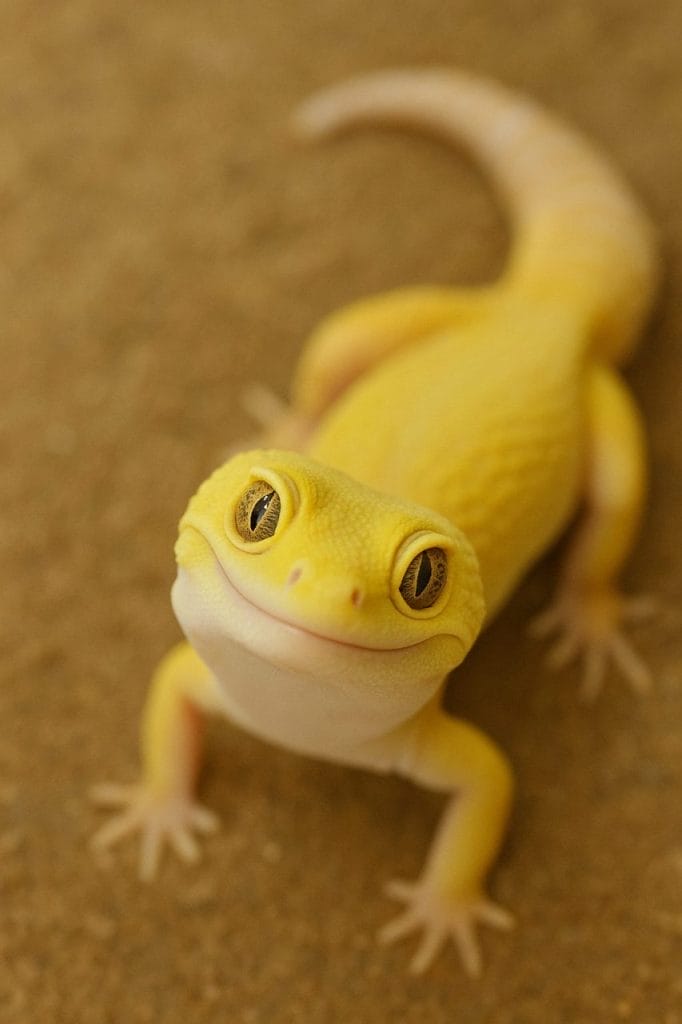
Vet Treatments You Might Expect
If home care doesn’t work or things look worse, a vet visit is the next move. Here’s what might happen at the clinic.
Eye Drops or Ointments
Vets often prescribe medicated drops to fight off infections or reduce swelling. These are much stronger than anything sold over-the-counter. You’ll usually have to apply them once or twice a day for a week or two.
Abscess Drainage
If the eye area is swollen due to an abscess, the vet may drain it using a needle. It sounds intense, but it’s quick—and necessary. After draining, they’ll likely prescribe antibiotics to prevent the infection from coming back.
Fluorescein Eye Stain
This is a glowing dye that sticks to any scratches or ulcers on the eye. The vet shines a black light over the eye to see where the damage is. It’s painless and helps them know how serious the issue is.
Antibiotic Injections or Oral Meds
For deep infections, eye drops aren’t enough. The vet might give an antibiotic shot or oral medication to help your gecko fight off the bacteria from the inside out.
Pain Relief
If the eye problem is making your gecko miserable, the vet may also give something for pain or inflammation to make recovery easier.
Vet care can seem intimidating, but it often makes all the difference. Catching the issue early means faster healing—and less risk of blindness.
How To Give Eye Drops Safely
Giving eye drops to a leopard gecko isn’t fun—for you or the gecko. But it’s doable if you stay calm and careful.
Keep Your Gecko Still
Ask someone to gently hold your gecko. One hand under the belly, the other over the back. Make sure the head is steady but not squeezed. If you’re alone, you can wrap the gecko in a soft cloth like a burrito—just leave the head exposed.
Use a Steady Hand
Hold the dropper close to the eye, but don’t touch it. Squeeze out one drop, then wait a second to see if it goes in. That’s all you need. No rubbing, no forcing.
Give Them a Break
Some geckos freak out the first time. If yours gets too stressed, stop. Let it rest and try again later. Forcing it only makes future doses harder.
Make It Routine
Try giving the drops at the same time every day. Use soft lighting and a calm voice. Over time, most geckos get used to it—especially if they trust you.
You don’t have to be perfect. Just be gentle, patient, and consistent. That’s what matters most.
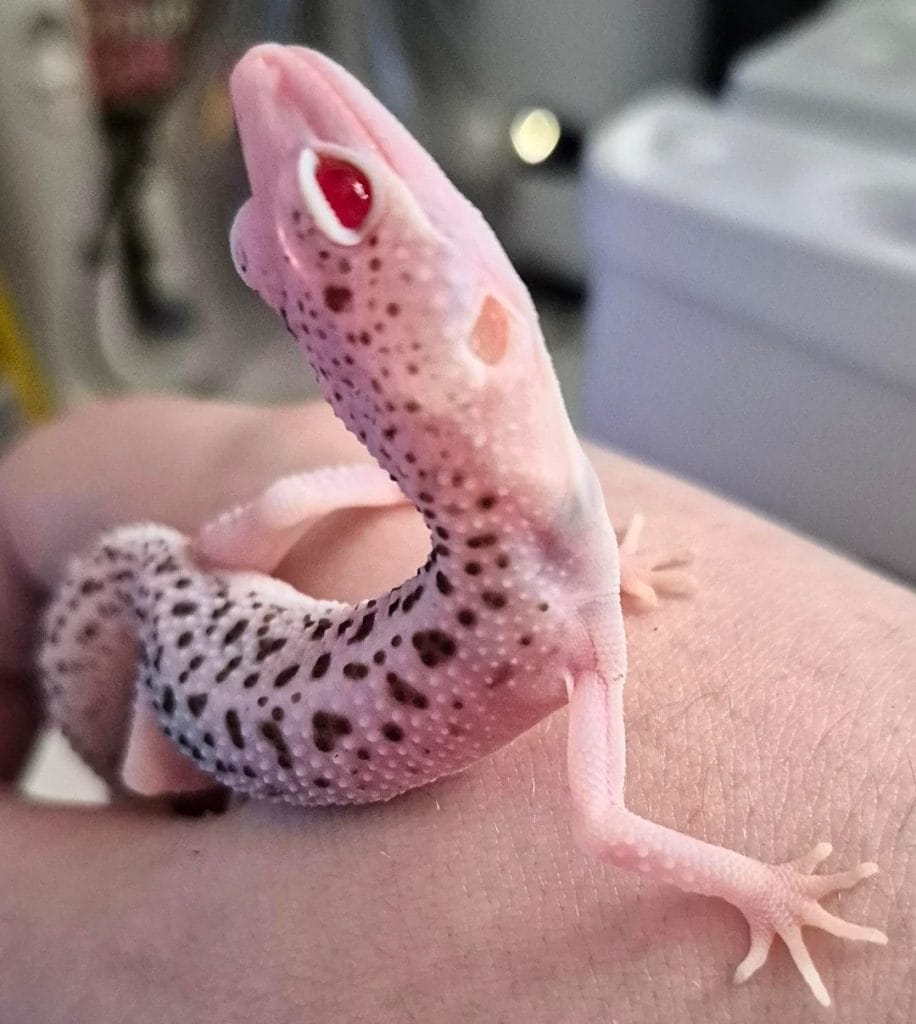
Should You Worry About Blindness?
If your gecko’s eye looks cloudy, it can lead to blindness—but not always.
In many cases, it’s something minor like stuck shed or dryness. That’s fixable with a little care and time.
But if there’s an infection, ulcer, or abscess left untreated, things can go downhill fast. Cloudiness that lasts more than a few days, gets worse, or comes with swelling is a red flag.
Once the eye is permanently damaged, there’s no fixing it. Geckos can still live with one eye, but their depth perception, hunting, and stress levels change.
So yes—if it’s cloudy and doesn’t clear up quickly, take it seriously. The earlier you act, the better the odds.
How To Prevent Eye Issues in the Future
Most eye problems don’t come out of nowhere. A few simple habits can keep your gecko’s eyes clear and healthy.
Keep Humidity in Check
Too little humidity during shedding = stuck skin.
Too much = bacterial growth.
Stick to the sweet spot—around 30–40% for leopard geckos. Use a moist hide to help with smooth sheds.
Gut-Load Their Insects
Feed their bugs properly. Carrots, sweet potato, leafy greens—these boost vitamin A. A dusting of reptile multivitamins once or twice a week helps too. Don’t skip it.
Make the Enclosure Safe
Remove sharp decor or rough surfaces that could poke the eye. Smooth rocks, soft hides, and safe branches are your best bet.
Clean Regularly
Dirty tanks are breeding grounds for bacteria. Spot clean daily. Full clean every few weeks. Keep water dishes fresh.
Watch for Early Signs
Don’t wait till the eye looks like a ghost marble. If your gecko blinks a lot, avoids light, or bumps into things—check the eyes right away.
Catching things early beats treating them later. Always.
About Author
Hello, I’m Muntaseer Rahman, the owner of AcuarioPets.com. I’m passionate about aquarium pets like shrimps, snails, crabs, and crayfish. I’ve created this website to share my expertise and help you provide better care for these amazing pets.
Disclaimer
This site is owned and operated by Muntaseer Rahman. AcuarioPets.com is a participant in the Amazon Services LLC Associates Program, an affiliate advertising program designed to provide a means for sites to earn advertising fees by advertising and linking to Amazon.com. This site also participates in other affiliate programs and is compensated for referring traffic and business to these companies.
